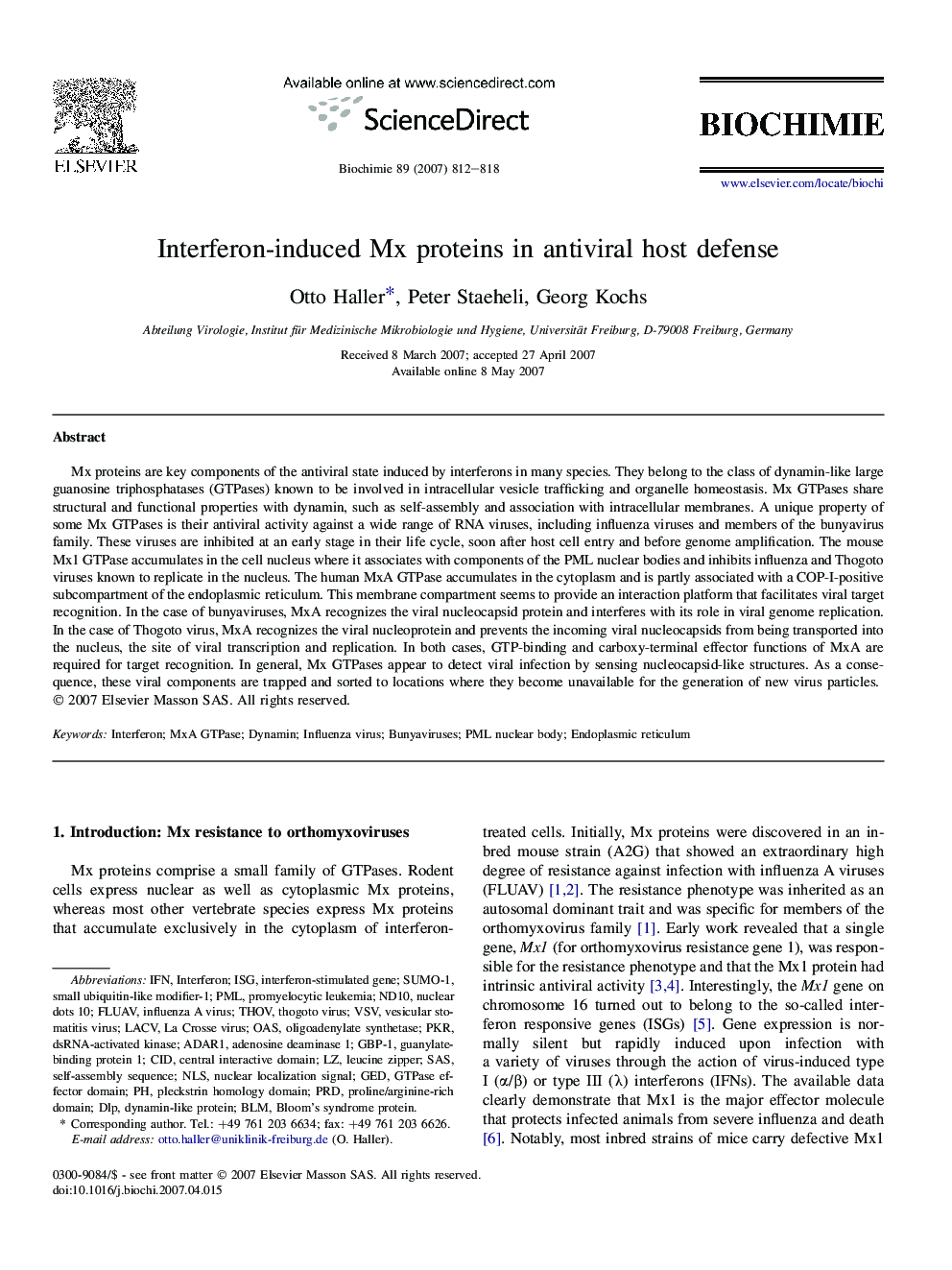| کد مقاله | کد نشریه | سال انتشار | مقاله انگلیسی | نسخه تمام متن |
|---|---|---|---|---|
| 1953379 | 1538437 | 2007 | 7 صفحه PDF | دانلود رایگان |

Mx proteins are key components of the antiviral state induced by interferons in many species. They belong to the class of dynamin-like large guanosine triphosphatases (GTPases) known to be involved in intracellular vesicle trafficking and organelle homeostasis. Mx GTPases share structural and functional properties with dynamin, such as self-assembly and association with intracellular membranes. A unique property of some Mx GTPases is their antiviral activity against a wide range of RNA viruses, including influenza viruses and members of the bunyavirus family. These viruses are inhibited at an early stage in their life cycle, soon after host cell entry and before genome amplification. The mouse Mx1 GTPase accumulates in the cell nucleus where it associates with components of the PML nuclear bodies and inhibits influenza and Thogoto viruses known to replicate in the nucleus. The human MxA GTPase accumulates in the cytoplasm and is partly associated with a COP-I-positive subcompartment of the endoplasmic reticulum. This membrane compartment seems to provide an interaction platform that facilitates viral target recognition. In the case of bunyaviruses, MxA recognizes the viral nucleocapsid protein and interferes with its role in viral genome replication. In the case of Thogoto virus, MxA recognizes the viral nucleoprotein and prevents the incoming viral nucleocapsids from being transported into the nucleus, the site of viral transcription and replication. In both cases, GTP-binding and carboxy-terminal effector functions of MxA are required for target recognition. In general, Mx GTPases appear to detect viral infection by sensing nucleocapsid-like structures. As a consequence, these viral components are trapped and sorted to locations where they become unavailable for the generation of new virus particles.
Journal: Biochimie - Volume 89, Issues 6–7, June–July 2007, Pages 812–818